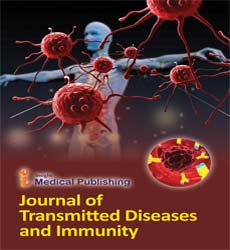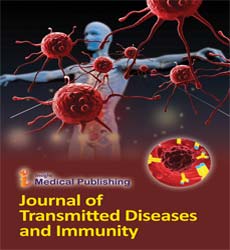ISSN : 2573-0320
Journal of Transmitted Diseases and Immunity
Stability and potency of anthrax protective antigen
Abstract
Hybridomas were created using spleen of mice that were actively immunized with rLFn (recombinant N-terminal domain of lethal factor). Later on, separate group of mice were immunized with rLFn to obtain a polyclonal control for passive immunization studies of monoclonal antibodies. This led to the identification of one cohort of rLFn-immnized mice that harboured disease-enhancing polyclonal antibodies. At the same time, the monoclonal antibodies secreted by all the hybridomas were being tested. Two hybridomas secreted monoclonal antibodies (H10 and H8) that were cross-reactive with EF (edema factor) and LF (lethal factor), while the other two hybridomas secreted LF-specific antibodies (H7 and H11). Single chain variable fragment (LETscFv) was derived from H10 hybridoma. H11 was found to have disease-enhancing property. Combination of H11 with protective monoclonal antibodies (H8 and H10) reduced its disease enhancing nature. This in vitro abrogation of disease-enhancement provides the proof of concept that in polyclonal sera the disease enhancing character of a fraction of antibodies is overshadowed by the protective nature of the rest of the antibodies generated on active

Open Access Journals
- Aquaculture & Veterinary Science
- Chemistry & Chemical Sciences
- Clinical Sciences
- Engineering
- General Science
- Genetics & Molecular Biology
- Health Care & Nursing
- Immunology & Microbiology
- Materials Science
- Mathematics & Physics
- Medical Sciences
- Neurology & Psychiatry
- Oncology & Cancer Science
- Pharmaceutical Sciences
